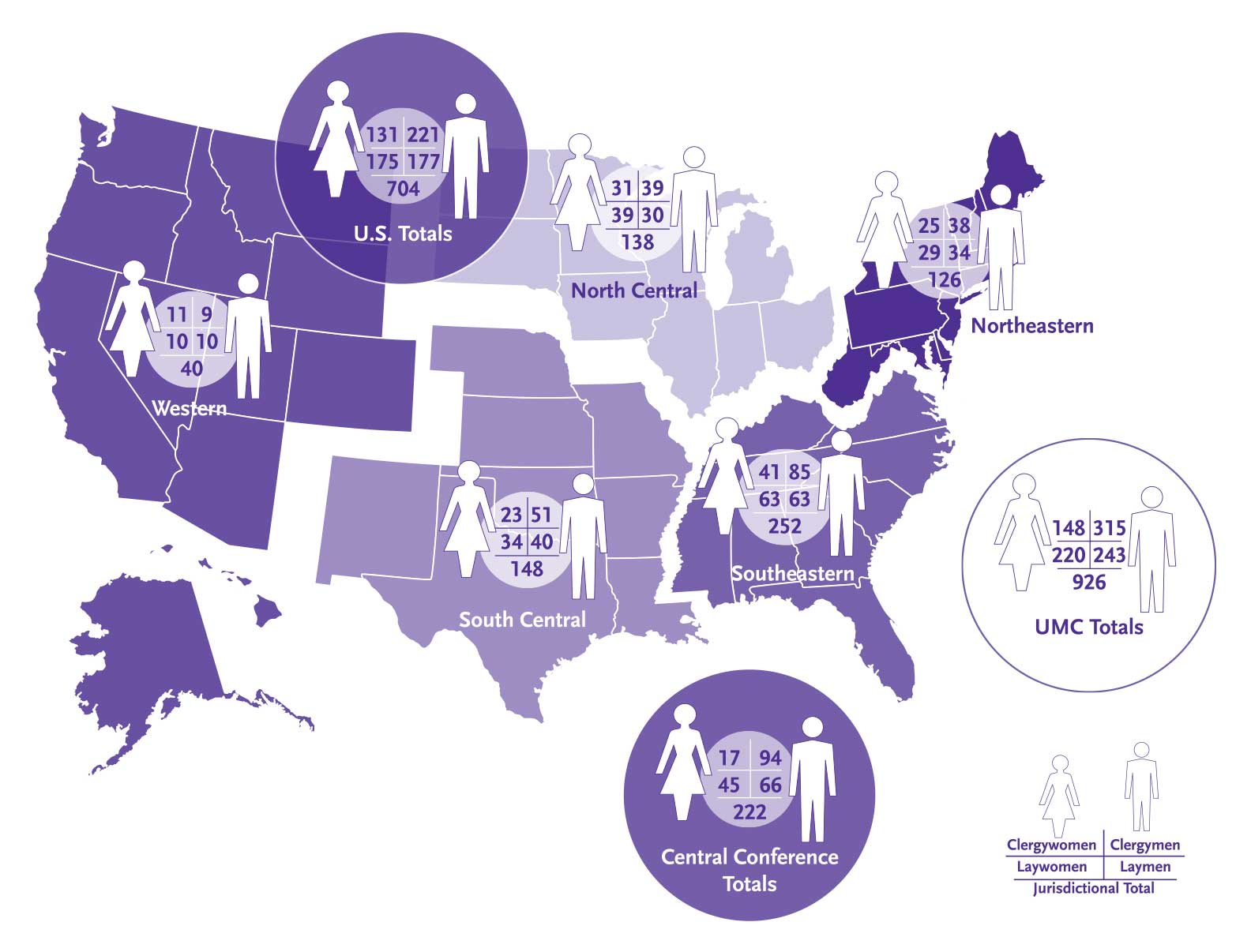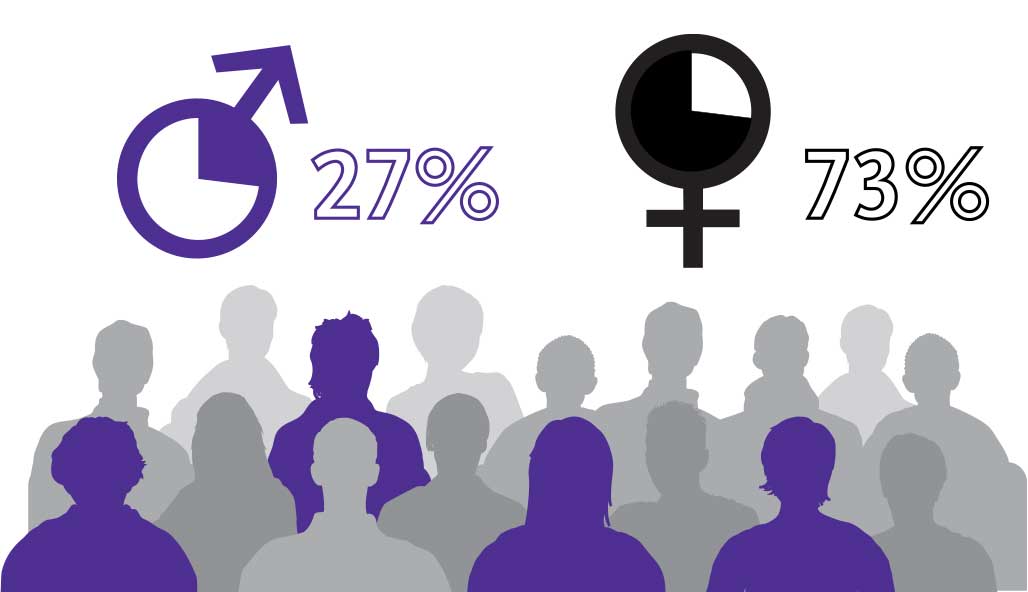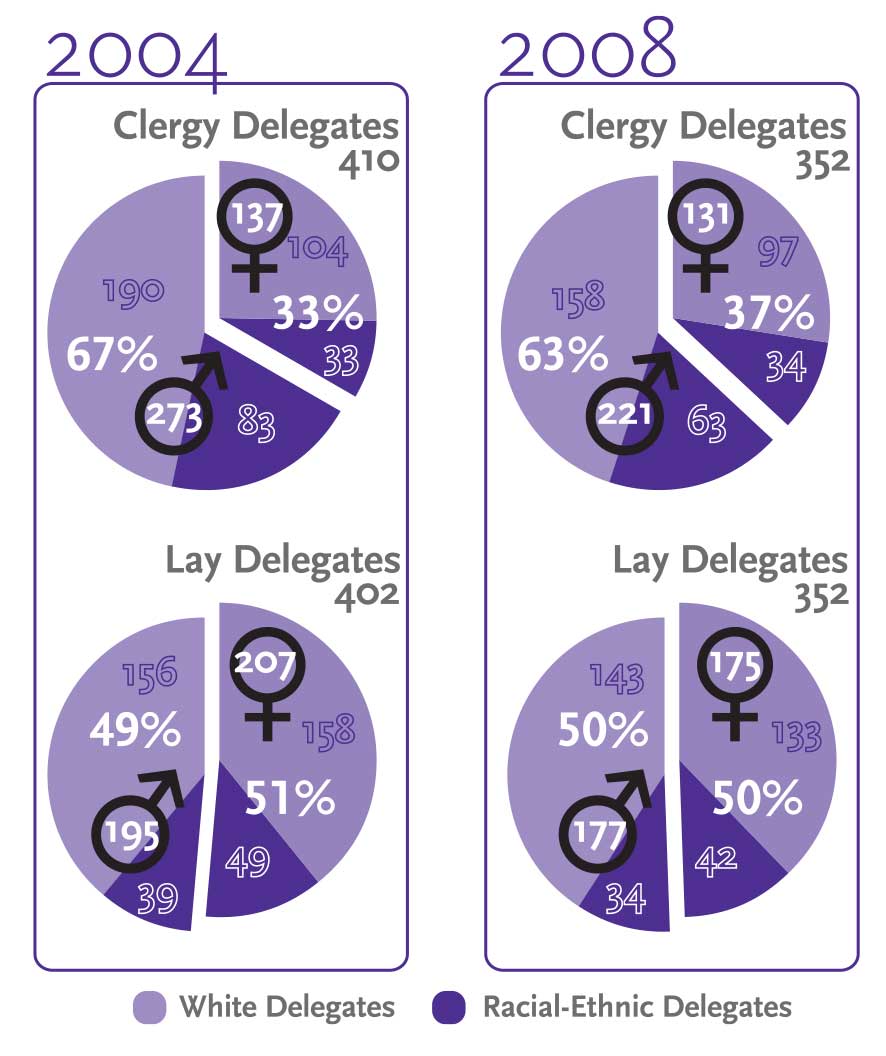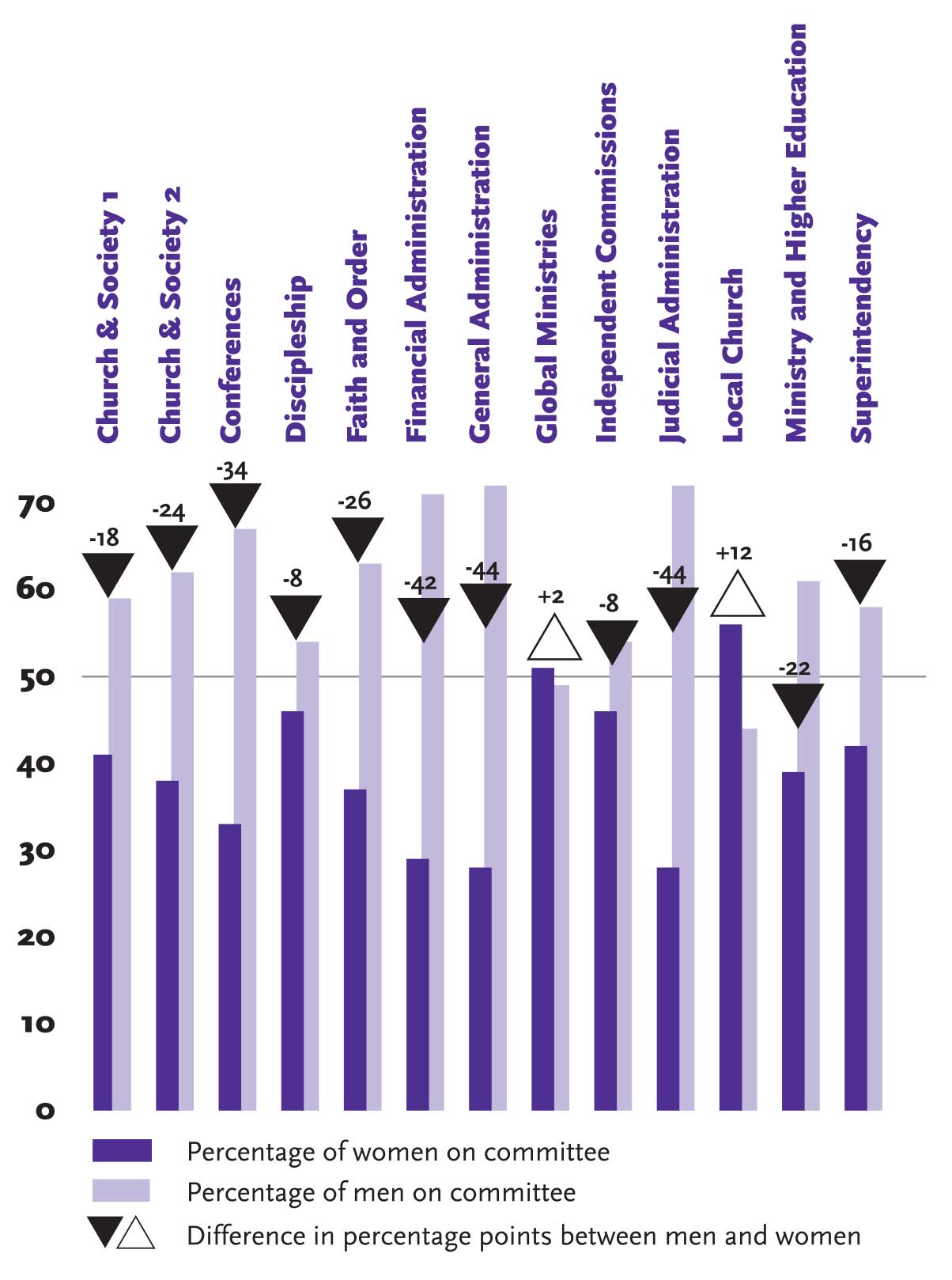By Craig This and Elaine May
Increased global participation is a hopeful sign for our church, but let’s make sure that our worldwide reach includes representation by women
A look at 2008 General Conference delegates by gender and jurisdiction
The increase in delegates from Central Conference (including areas of Europe, Africa and the Philippines) has greatly affected the overall percentage of men and women serving at General Conference. The total number of Central Conference delegates rose from 188 in 2004 to 222 in 2008. Women account for 15% of the 111 clergy delegates from Central Conference and 40% of the 111 lay delegates. Women make up 28% of the Central Conference delegation and 43% of the U.S. delegation. Overall, 40% of General Conference delegates are women.

2008 delegation heads inclusive?

In many cases, the head of an annual conference delegation to General Conference wields enormous influence about voting and assignment to legislative committees. For clergy, too, being the head of a delegation can be a step toward being elected a bishop.
For the 2008 General Conference, only 27% of delegates are headed by women; men make up 73% of delegation heads. With women as more than half the world’s population (and the church’s membership), we ask again, how serious is our denomination about becoming more inclusive and representative of women, people of color and people under 40?
A breakdown of delegates by gender and race, 2004 and 2008

The overall percentage of women U.S. delegates in 2008 is 43%—about the same as in 2004. Representation by U.S. clergywomen decreased by six delegates, or 4% of clergy representation. And U.S. laywomen lost 32 seats, a 1% slide from 2004.
The percentage of U.S. racial-ethnic delegates remained constant between 2004 and 2008 at 25% of the voting delegates. The percentage of racial-ethnic women delegates increased by 1%.
As a whole, the number of U.S. racialethnic clergy delegates remained virtually the same, with 28% of the total number of clergy seats. U.S. racial-ethnic clergywomen’s participation increased slightly (2%, or 1 delegate), so that U.S. racial-ethnic clergywomen will hold 10% of the clergy seats at the 2008 General Conference.
U.S. racial-ethnic lay members have also remained constant between 2004 and 2008 with 22% of the lay seats. U.S. racialethnic laywomen remained constant as well, with 12% (or 42) of the lay seats.
Women underrepresented on committees

Eleven out of 13 legislative committees have more men than women members.
How will the gender ratio influence the discussion and decision-making in these committees? What impact will the decrease in women delegates have on the life, witness and mission of The United Methodist Church?
Craig This is data analyst in the Department of Institutional Research at Wright State University in Ohio.
Elaine Moy is assistant general secretary for finance and administration for GCSRW.
